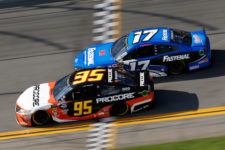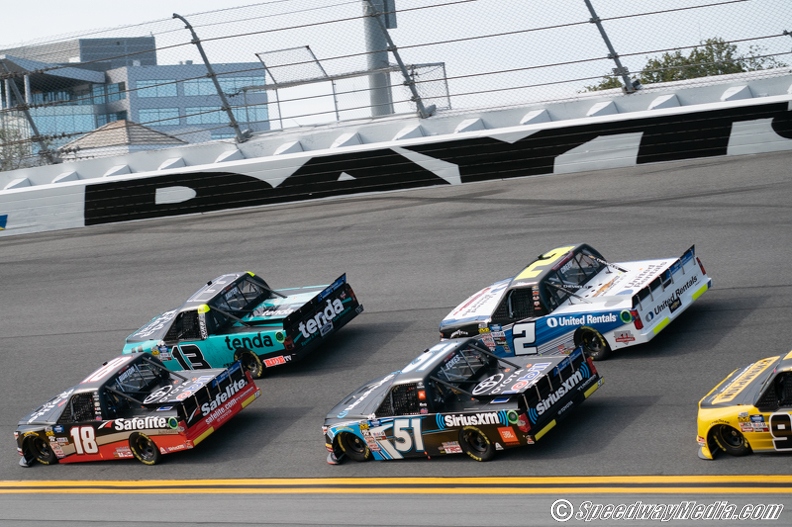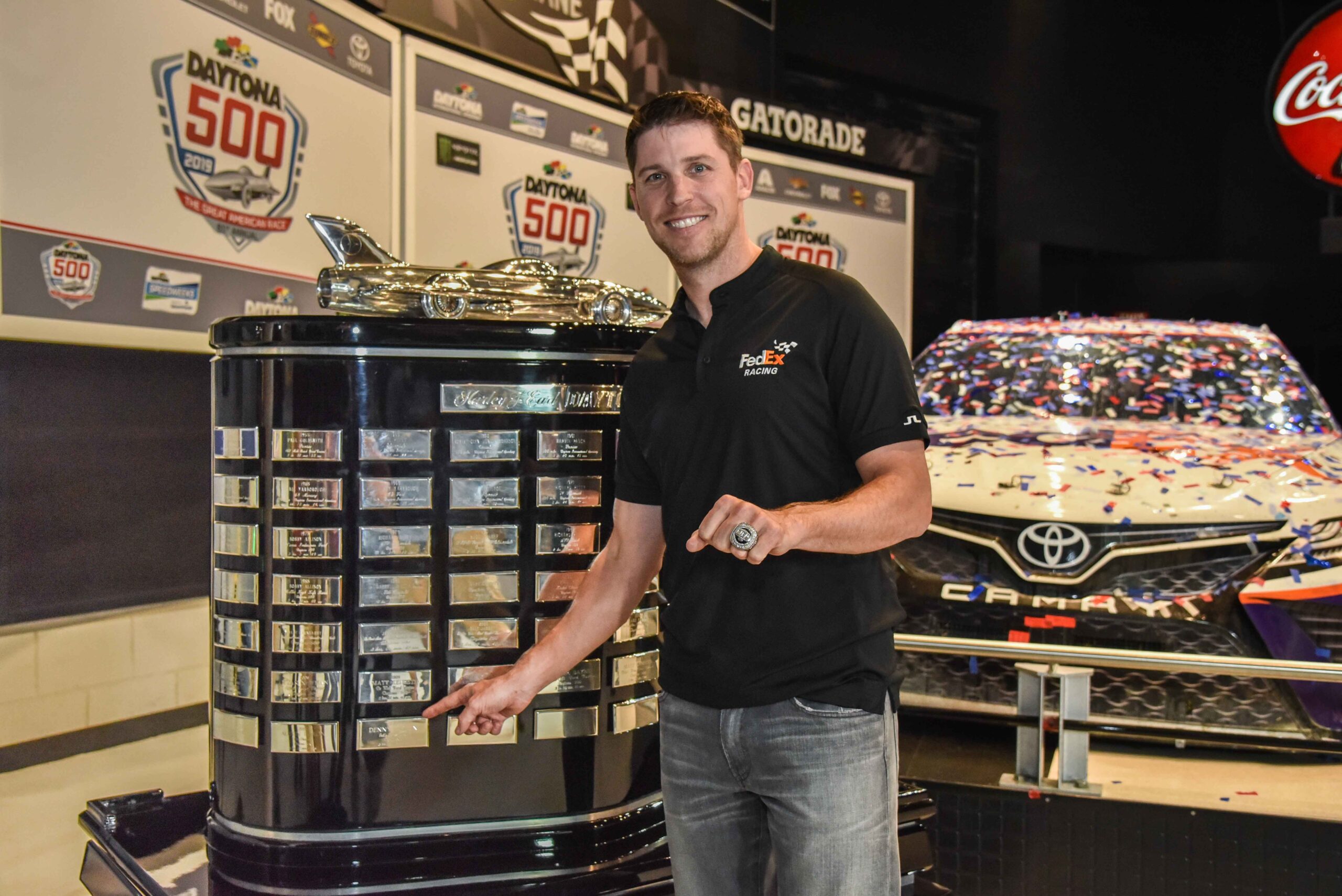The buildup and anticipation came and went. The 61st running of the Daytona 500 is officially in the books. A new season of NASCAR is truly underway.
But before we turn our focus to Atlanta Motor Speedway and beyond, here’s some thoughts I had on Sunday’s race.
“DiBurrito” had a breakout race

Matt DiBenedetto has always been the eternal underdog in his years of racing in NASCAR. He’s shown flashes of excellence that made him a rising star in the NASCAR K&N Pro Series ranks, but it never really translated when he made it to the national level.
That changed Sunday, when he led a race high of 49 laps. For context, that’s more laps than he’s led in any race, any season and his cumulative Monster Energy NASCAR Cup Series seasons combined.
“Unbelievable how fast my car was,” he said. “I’ve never had a piece under me like that, so that’s amazing.”
Now keep in mind that the racing we see at Daytona International Speedway isn’t what we see at any other track, besides Talladega Superspeedway. And come next week at Atlanta, DiBenedetto could be back to running mid-pack.
He also finished 28th, after being collected in the Big One with 10 laps remaining.
With that said, however, success at plate tracks is still noteworthy, and there’s a lot you can extrapolate from a strong run.
“Had a lot of changes with this team and we came out and led the most laps and were flying in our Toyota Camry today,” he added. “A lot of momentum going into the season even though it kind of ended pretty heartbreaking.”
If he has sustained success from Atlanta onwards, you can point back to Feb. 17 as the day he had his “breakout race.”
Sunday’s race saved a forgettable Speedweeks
Up until the green flag dropped on Sunday’s Daytona 500, Speedweeks 2019 stood to be arguably the most forgettable in recent memory.
The Clash was a single-file snoozefest that was highlighted by a misstep on Jimmie Johnson’s end that triggered a 17-car wreck. The Duels were a single-file snoozefest that was highlighted by Joey Logano’s last lap pass to win Duel No. 2. Saturday’s XFINITY Grand National Series race was a single-file snoozefest that had no bright spot.
The only race that wasn’t a snoozefest, prior to the 500, was Friday night’s Gander Outdoors Truck Series race. And that was a wreck-filled event in which only nine trucks finished the race and a crew member was run over.
Sunday’s Daytona 500, however, was an exciting race that saved this year’s Speedweeks. Granted, there were some of the usual drawbacks of modern restrictor plate racing: The lead car had such strong control of the draft and could block any advance at whim. And while the finish suffered because of this, passing wasn’t a Herculean task.
With this being the final restrictor plate race, these drawbacks could be a non-issue at Talladega.
The final restrictor plate race
While restrictor plates had been used prior to 1988, Feb. 14, 1988 was the first time NASCAR mandated its at both Daytona and Talladega.
While intended as a safety device, the restriction of air flow to the engine, thus reducing horsepower, had the byproduct of bunching the field together and creating the multi-line pack racing, and multi-car wrecks that became synonymous with Daytona and Talladega.
With NASCAR’s new aero package slowing down speeds, the restrictor plate has become redundant.
It’s too soon to say if the plate will ever make a comeback. There’s always the chance that NASCAR doesn’t like what it sees at Talladega and Daytona (safety speaking) with the new aero package and brings the plates back.
But if it truly is the final time we ever used the plates, and while I don’t expect the racing at Daytona or Talladega to change that much, there’s a part of me that’s sad to see the device that led to the most competitive races (objectively speaking) NASCAR sees year in and year out.
Ratings are up
At the time that I wrote this, the overnight ratings for Sunday’s Daytona 500 were released.
It also finished as the highest rated sports event of the weekend, beating out the NBA All-Star Game.
This comes after an increase in ratings for The Clash.
Of course, we have 35 more races to run. So it’s too early to say if this weekend was just a bright spot or sign of turning the ship around. But it’s great to have more people watching NASCAR’s biggest race this year.







